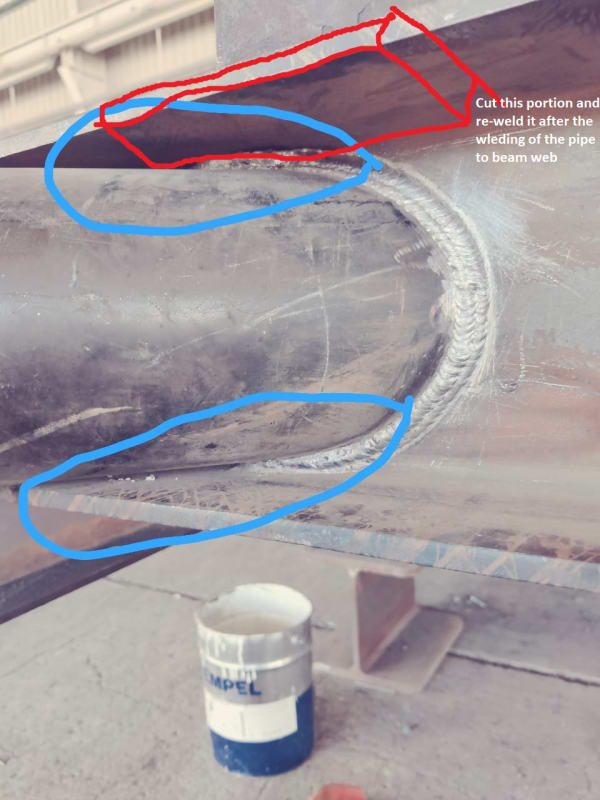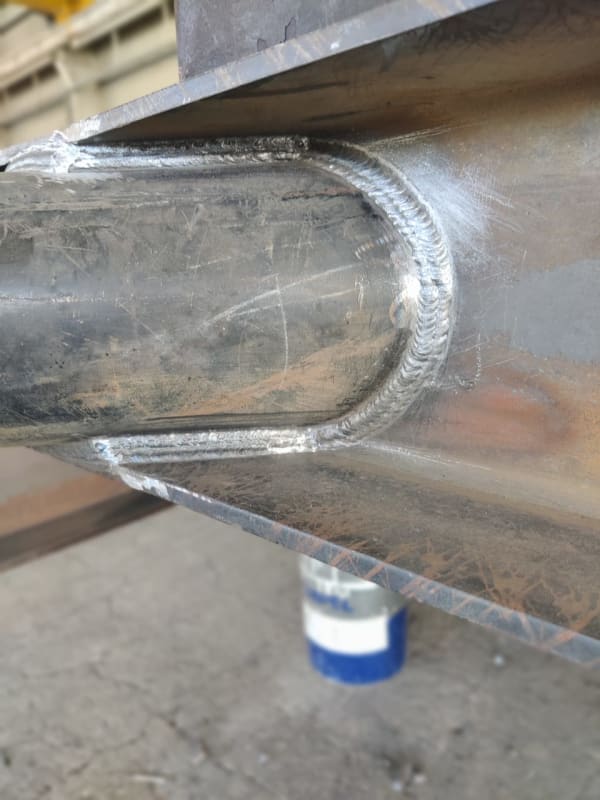Hello,
As per the image below, it is difficult to perform complete welding of the pipe with beam's web plate, hence the client is recommended to cut some portion of the top and bottom flange and complete the welding of the pipe with the web plate of the I beam, then re-weld the portion again (CJP) on the top side and bottom side of the flange.

So the concern is we do not want to do as per the recommendation, we have carried out the welding as per the below image. so I need to justify why client recommendation is not technically possible.

Please advise.
Thank You.
As per the image below, it is difficult to perform complete welding of the pipe with beam's web plate, hence the client is recommended to cut some portion of the top and bottom flange and complete the welding of the pipe with the web plate of the I beam, then re-weld the portion again (CJP) on the top side and bottom side of the flange.

So the concern is we do not want to do as per the recommendation, we have carried out the welding as per the below image. so I need to justify why client recommendation is not technically possible.

Please advise.
Thank You.
